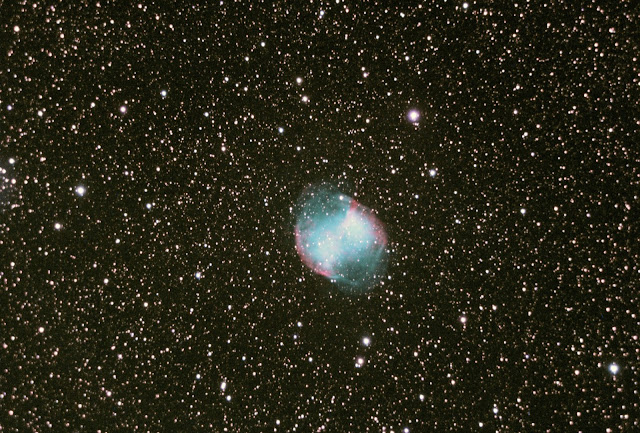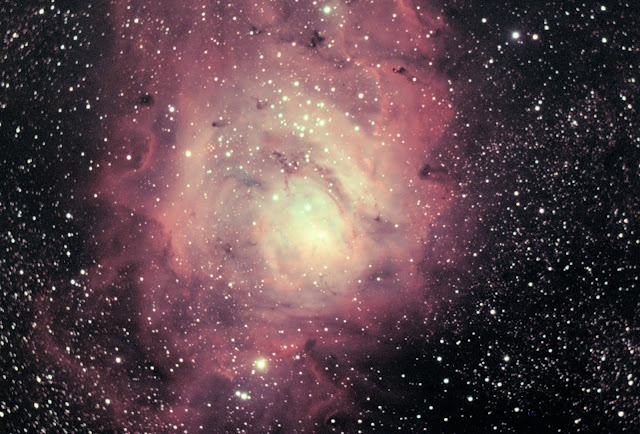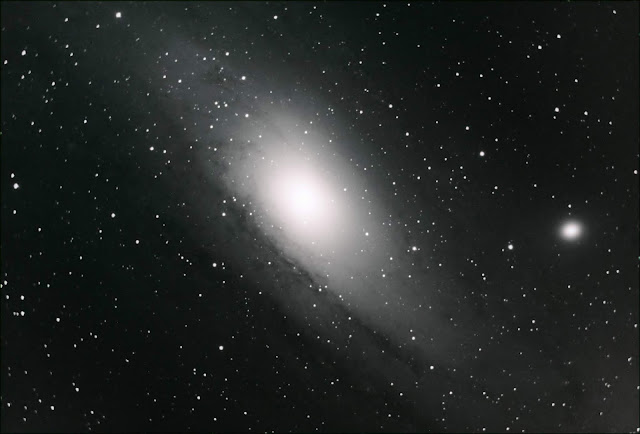First off a night with a 66% waxing moon is far from an ideal test night. The purpose of Orion SkyGlow Astrophotography Filter is to remove various bands of artificial outdoor lighting. The moon is broad band reflected sunlight which is not fully filterable. Also making this night non-ideal was high clouds that moved in far sooner than the forecast 2300 EST cutting short the night.
That said I was able to image NGC7635, the bubble nebula using 15x2 min and 6x5 min sub-frames. The Starizona Night Owl 0.4X focal reducer was used for imaging. Images were processed using Paintshop ProX9. To give a direct comparison between the two images the six steps used to process the 6x2min image were saved to a script which was then applied to the 15x2 min case. The process and cropped images appear below.
On another note I am finding images acquired with the Starizona Night Owl are far more susceptible to the exposure conditions of the flat frames used in stacking. I image using SharpCap 3.2 and acquire flat frames over a range of exposures while keeping the logarithm of the histogram as close to a 20% to 80% range. In any case I would consider either image below to be acceptable considering the phase of the moon.
 |
| NGC7635 -- 6x5 min |
















